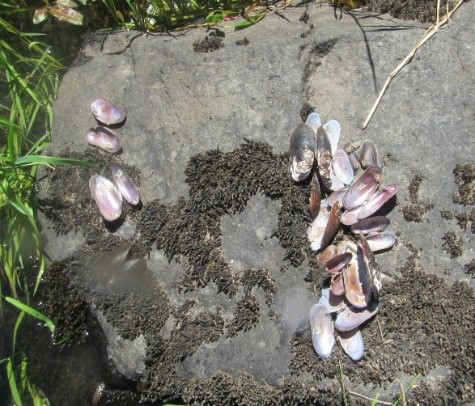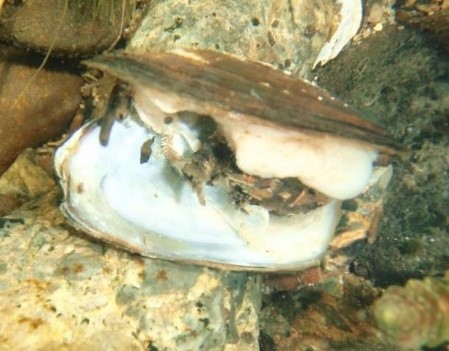Project History
In 2002 Confederated Tribes of the Umatilla Indian Reservation (CTUIR) submitted a proposal to the Bonneville Power Administration, requesting funding to start a freshwater mussel project. This request was granted making it first freshwater mussel project in the Columbia Basin Fish and Wildlife Program. Today it is called the CTUIR Freshwater Mussel Research and Restoration Project (FWMRRP).
Freshwater mussels in western North America are notoriously understudied. When the FWMRRP first started, little was known about western freshwater mussels. Studies of mussel distribution, reproductive biology, habitat associations, and genetics were the initial focus of the FWMRRP. Results from the initial research concluded freshwater mussels were absent from areas where they occurred historically and declining in abundance and diversity at some locations. In response to this finding, Tribal and federal agencies started focusing their efforts on restoring freshwater mussels, native to the Columbia River Basin, in order to rebuild ecosystem diversity, function, and traditional cultural opportunities in the region.

In 2013 a research laboratory was started by the FWMRRP at the Walla Walla Community College Water and Environmental Center. This facility was built to support freshwater mussel and lamprey propagation research efforts. In 2019, the project expanded its focus to include using propagated freshwater mussel to restore mussels to their historic range and supplement low density fragmented populations. Our project goal is to return self-sustaining freshwater mussel populations to ceded areas to restore harvest opportunities for traditional use and education, and to restore aquatic ecosystem function for the benefit of all organisms as part of a holistic approach to watershed restoration and management.
Mussel Declines
The richest freshwater mussel fauna in the world is found in North America north of Mexico and is represented by about 302 species of bivalves. Freshwater mussels are considered the most endangered faunal group in North America, with more than 75 percent of species either imperiled or extinct. Extinction rates for freshwater mussels are an order of magnitude higher than expected background levels, and freshwater mussels are imperiled disproportionately relative to terrestrial species (e.g., birds and mammals). Declines have been recorded in the three western genera present on CTUIR ceded lands (Anodonta, Gonidea, and Margaritifera). However, there is a dearth of current information on the distribution and abundance of western freshwater mussels, mainly because comprehensive surveys throughout their distributional ranges remain incomplete. Although most western states, including Oregon and Washington, recognize that freshwater mussel populations are declining, conservation and recovery efforts are hampered by the lack of basic information on western mussel ecology, life histories, genetics, zoogeography and systematics.
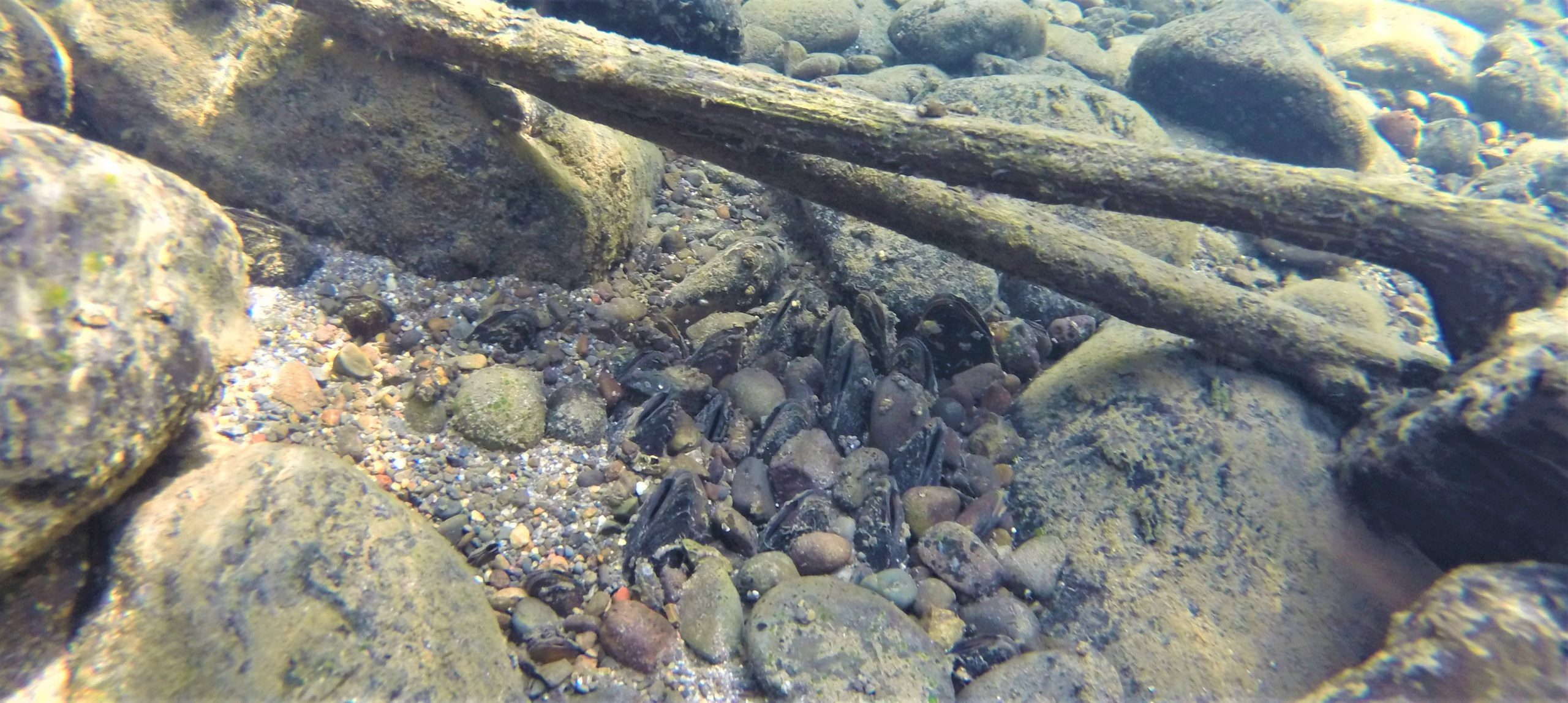
Tribal Importance
Freshwater mussels were traditionally harvested by Columbia Plateau tribes whenever they were available. Mussels were especially important to Tribal people in late winter, when other foods were scarce. The shells were stored in large piles, and later worked to be used for wampum (shell necklaces), hooks, and adornment. At Ímatalam and other places, Tribal people harvested freshwater mussels for over a thousand years. Freshwater mussel shell material was traded along many trails that met at Ímatalam. The Umatilla, Walla Walla and the Cayuse people were very influential within the region, living halfway between the Pacific Coast and the Great Plains.
The Umatilla River Vision, a First Foods based, holistic ecosystem management plan developed by the CTUIR, guides freshwater mussel recovery and conservation as part of a larger effort to rebuild ecosystem diversity and function in the Umatilla and other rivers within CTUIR’s ceded area. Recovering native freshwater mussel populations in the Umatilla River and other ceded area subbasins complements CTUIR’s ongoing efforts to restore ecosystem diversity, function, and traditional and cultural opportunities in the context of First Foods resource management.
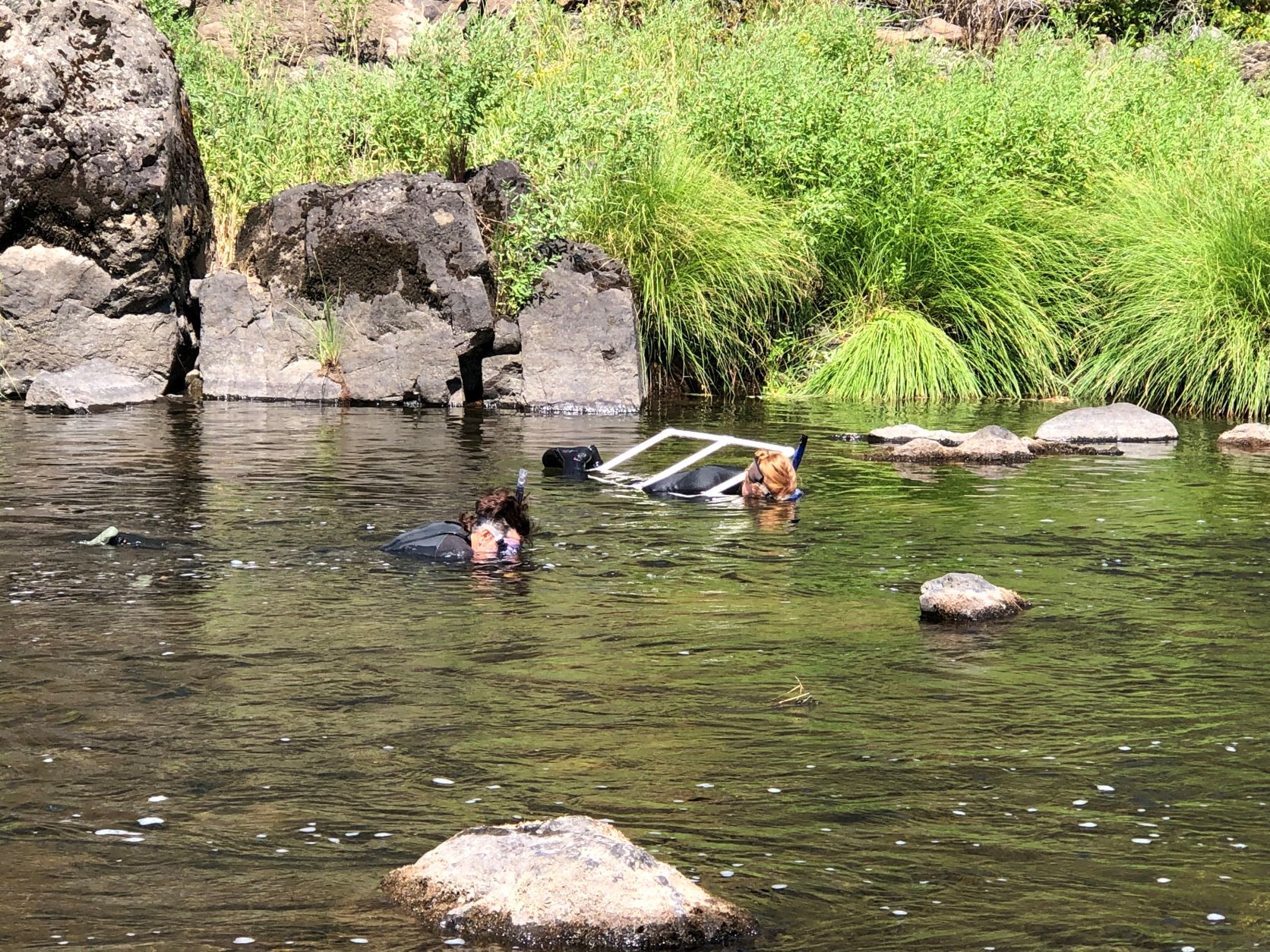
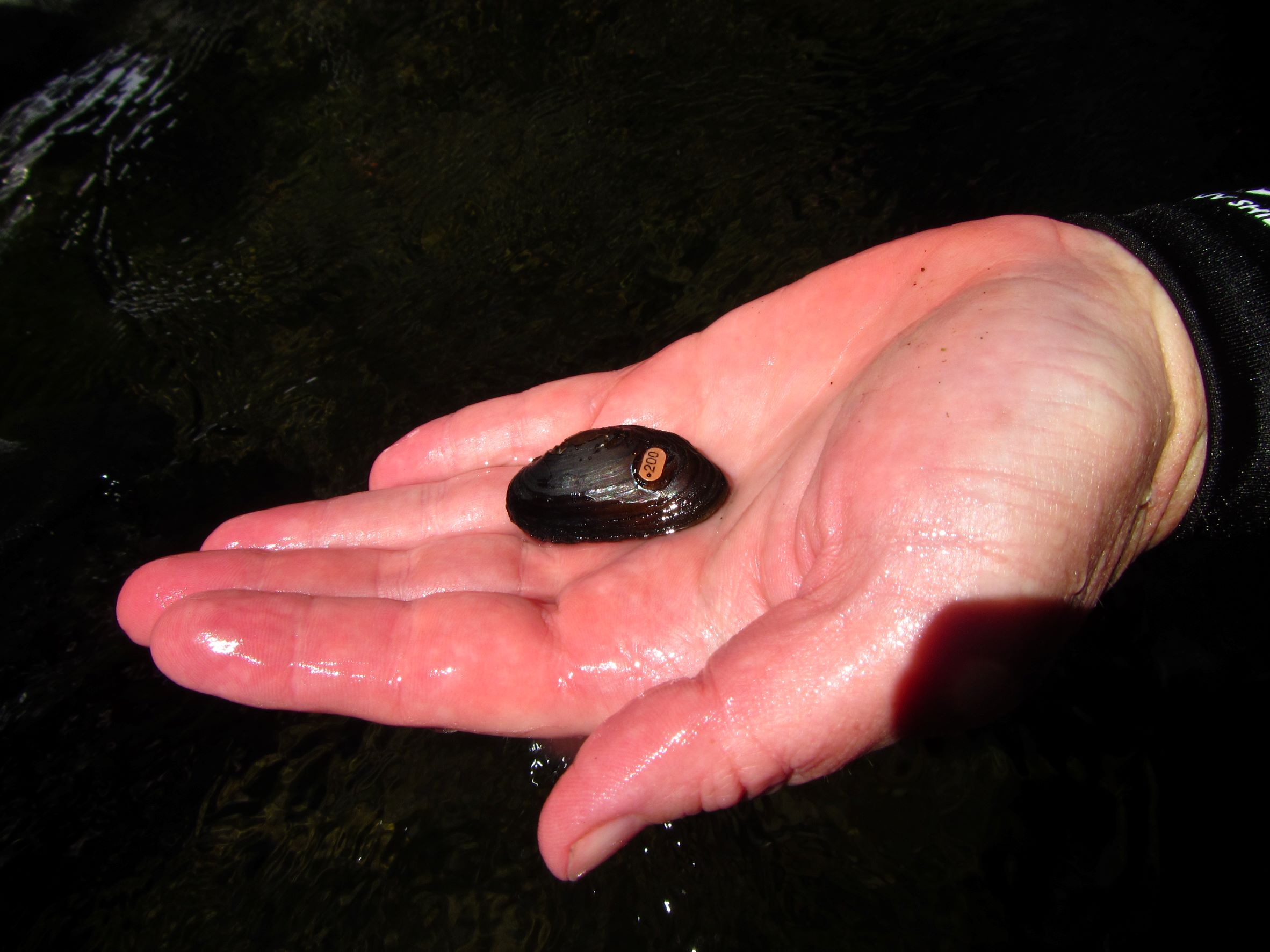
Ecological Importance
Native freshwater mussels provide important ecosystem services and can be a powerful management tool for maintaining and reclaiming water quality. A largely sedentary life style and sensitivity to pollution make freshwater mussels excellent bioindicators. Freshwater mussels are important benthic-pelagic couplers in stream systems. As long-lived filter feeders, freshwater mussels can remove large amounts of particulate matter from the water column, and transfer those resources to the substrate as biodeposits (e.g., mussel feces and pseudofeces). Filtration rates have been estimated to be 0.5 – 1.25 gallons per hour per mussel. This means 211,000,000 mussels can filter 2-6 billion gallons of river water a day!!
Small suspended particles that may not otherwise settle from the water column are filtered by mussels and deposited on the substrate surface, made available as a food or structural resource thereby aiding benthic productivity. Studies have observed increased growth rates in juvenile Pacific Lamprey (Entosphenus tridentatus)in the presence of the Western Pearlshell (Margaritifera falcata), and increased abundance and diversity of aquatic insect populations around freshwater mussel beds. Freshwater mussels have been found to play a significant role in local food webs by increasing the flux of organic and inorganic matter from suspension to the riverbed, which in turn positively influences macroinvertebrate assemblages, a primary food source for salmonids. Freshwater mussels can also be important food items for fish, crayfish, mink, muskrats, otters, and raccoon.
